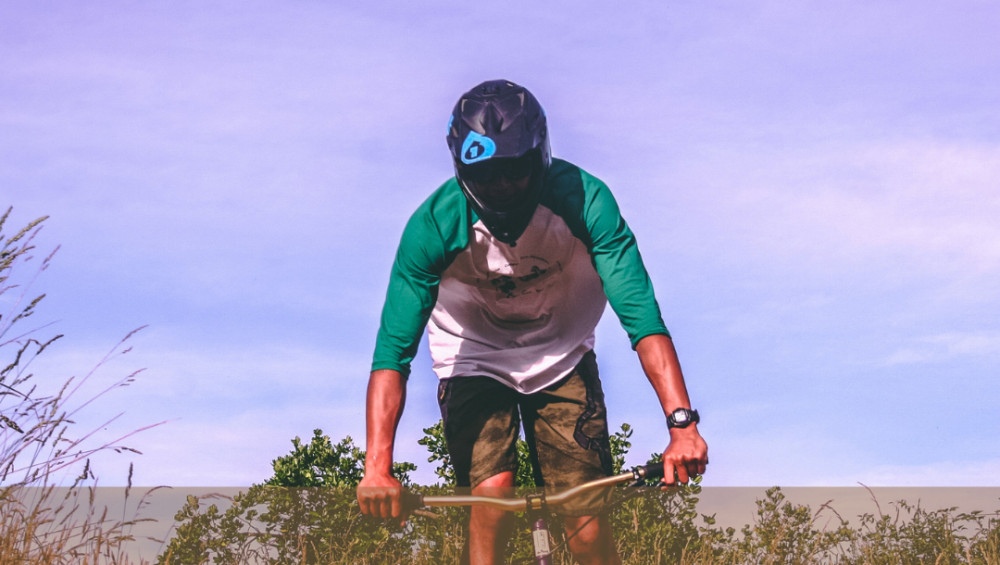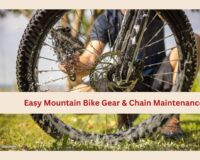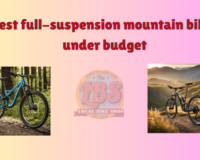There’s nothing more natural than riding a bicycle when you’re just starting. But you’re riding over rocks, across streams, and over all types of terrain, which (at least initially) seems incomprehensible.
At the same time, It’s’ thrilling and exciting, but also nerve-wracking and terrifying. Things get better—and more enjoyable! —with time. Nevertheless, most of us wish someone had shared some of these tips and tricks when we were just starting. When you’re first learning the ropes of mountain biking, you need to know these nine tips, so let’s get started!
#1. Hold on to your looseness.
Rolling over technical terrain is your bike’s job. Beginners need to let their bikes do the work. Make sure your body is free to move underneath the bike. Whenever you ride over obstacles, such as roots or rocks, keep your butt off the saddle. You’ll need more room to maneuver your bike on technical terrain. You should flare out your elbows and knees to let the bike flow rather than fight it when ripping down a descent.
#2. Keep the momentum going.
You might think it’s counterintuitive, but when you’re on a mountain bike, using your momentum to keep moving forward when the terrain gets challenging makes clearing tricky sections of trail easier. You should maintain momentum whenever you can out there
#3. Make a weight-shifting choice.
There are steep inclines and declines, as well as extreme terrain. Maintain traction by shifting your weight forward and leaning forward as you ascend a steep pitch.
A dropper post will help you shift your weight behind the saddle over the rear wheel when the trail tilts down so that you don’t end up over the bars.
#4.Don’t be too hard on the brakes.
Beginners to mountain biking will be tempted to pull both brakes to the bars with every ounce of strength. Avoid this temptation! It takes one or two fingers to modulate the speed on a mountain bike because the brakes are strong enough.
Before entering tricky areas like rock gardens or corners, adjust your speed, and keep it steady throughout. Keep your foot off the front (left) brake if you find yourself going into a turn too fast. You may end up over the bars and onto the ground if you stop your front tire. It is more likely that you will stay upright if you hit the rear (right) instead.
#5.Make sure you use all the gears.
The profile of a mountain bike trail often looks like Jaws looking for his next meal. In other words, their terrain is undulating and often highly bouncy. You should anticipate changes in the landscape by shifting ahead of time. Maintaining momentum is one of your best friends, as you already know.
#6. Adjust Your Suspension
Nowadays, most mountain bikes have at least a front suspension fork, and most of them also have a rear shock absorber. Rolling over them makes bumps disappear almost instantly. You must set them up to work when you move over them.
When you’re a beginner, you’ll need a little time to get used to setting your sag and rebound (amount of travel you use while riding the bike). Please don’t do anything stupid like roll out on a technical trail with a rigid bike the first time you do it (it happens!). Learn how to lock out and open up your suspension.
#7. Check to see if you are moving in the right direction.
Focusing your attention on that rock you don’t want to hit nearly guarantees that you’ll beat it. It is called “target fixation,” where your bike goes where your gaze directs it. Focus on the destination rather than obstacles. Use your peripheral vision to avoid and deal with obstacles immediately before you, keeping your chin level to the ground and looking as far down the trail as possible. If you trip up due to an obstacle, it is better to replace your helmet with one explicitly designed for trails.
#8. Make sure you know the basics of repairing.
Off-road mechanicals is more likely to occur due to the rugged terrain than they are on pavement. But tubeless tires still have the potential to cause flats. If anything fails, you will know what to do. You need to know how to fix a flat tire. In addition to repairing broken chains, replacing bent or cracked derailleur hangers is also essential. Ask your local bike shop for instructions.
#9. You Need More Than Just a Credit Card.
Forests and deserts don’t have many convenience stores. You will usually need to allow more time than you expect for mountain bike rides since you run into challenging terrain, get a mechanical issue, or get lost. Make sure you pack more food and water than you think you will need. If something goes wrong, an individual may not be able to come and pick you up.
Even if they had service, you might not have it. Always keep these items at hand: a spare tube (or two), a pump, and a multi-tool. When you know you have everything you need, you’ll be more relaxed and have more fun.
For more cycling tips for the beginners, you can connect with us!






